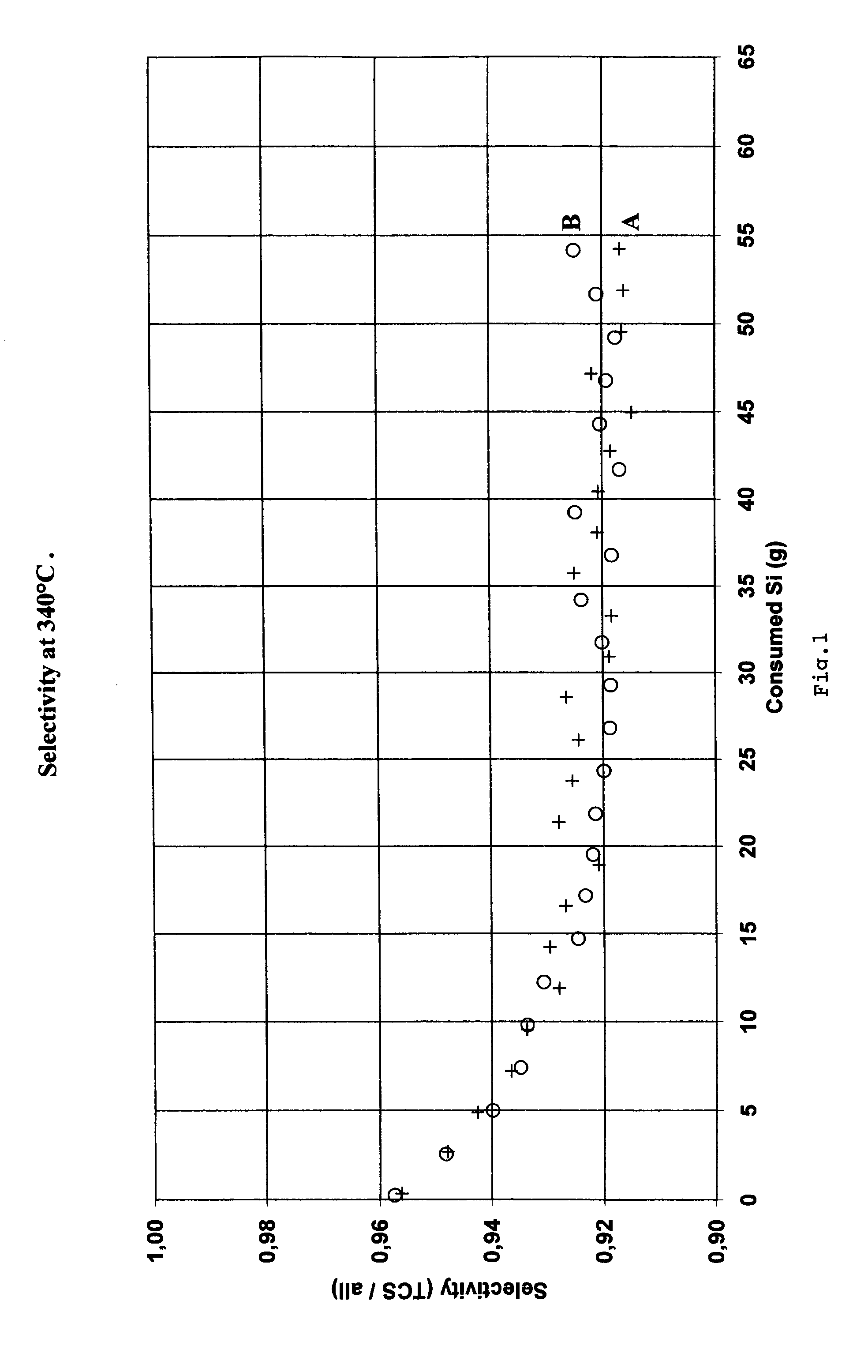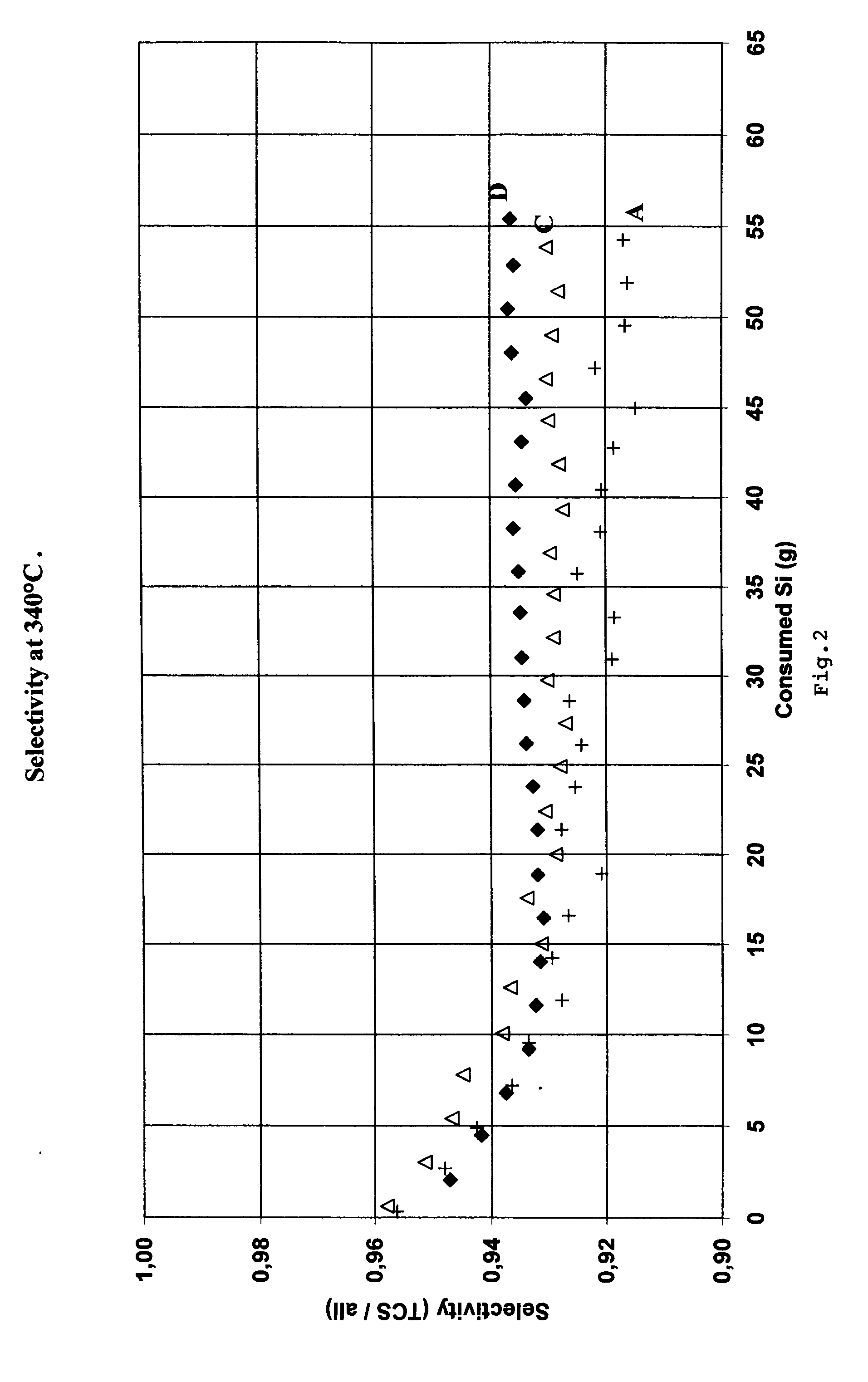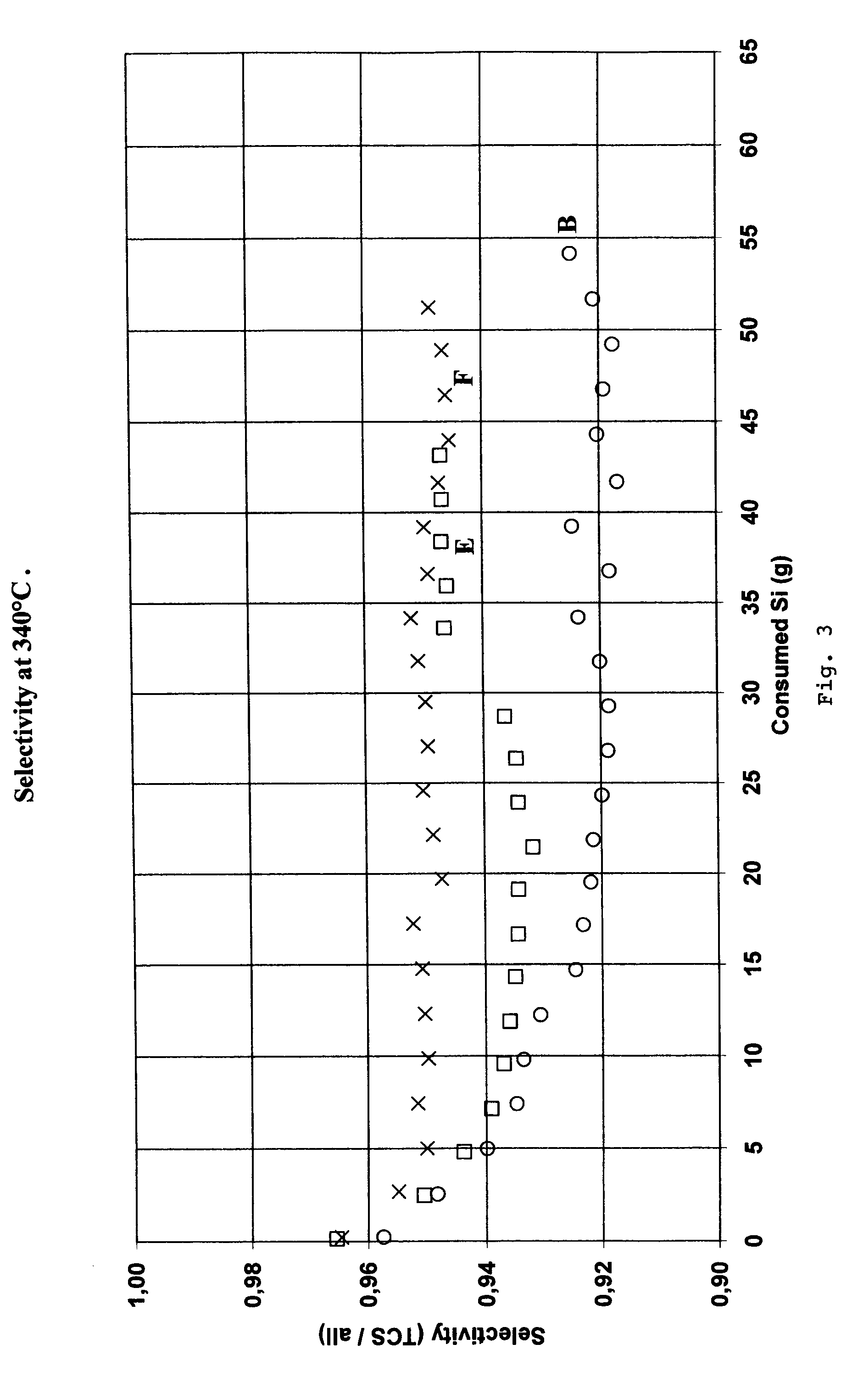Method for production of trichlorosilane and silicon for use in the production of trichlorosilane
- Summary
- Abstract
- Description
- Claims
- Application Information
AI Technical Summary
Benefits of technology
Problems solved by technology
Method used
Image
Examples
example 1 (
Prior art)
[0027]Metallurgical grade silicon produced by Elkem A S was crushed, milled and screened to a particle size between 180 and 250 μm, identified as sample A. Metallurgical silicon with similar composition to sample A was prepared. 46 ppm copper was alloyed into the refining ladle. The silicon was then cast, solidified and cooled to room temperature. The sample was then crushed and milled to a particle size between 180 and 250 μm. This sample has been identified as sample B.
[0028]The chemical analysis of silicon samples A and B are shown in Table 1.
TABLE 1SampleSampleSampleSampleSampleSampleABCDEFSi 99.4999.4999.4999.4999.4999.49wt %Al 0.140.160.140.140.160.16wt %Ca 0.0090.0030.0090.0090.0030.003wt %Fe 0.250.230.250.250.230.23wt %Zr ppmwSr ppmwPb ppmwBi ppmwAs ppmwZn ppmwCu 464646ppmwNi 475647475656ppmwMn 344034344040ppmwCr ppmwV 617961617979ppmwBa 80200724032ppmwTi 0,0140,0130,0140,0140,0130,013wt %Mo ppmwSb ppmwSn ppmwK ppmwP 151515151515ppmw
[0029]Samples A and B were used ...
example 2
[0031]80 ppm by weight of barium in the form of barium silicide powder was mixed to silicon sample A in Table 1. This sample was denoted sample C, shown in Table 1.
[0032]200 ppm by weight of barium in the form of barium silicide powder was mixed to silicon sample A in Table 1. This sample was denoted sample D, shown in Table 1.
[0033]Samples A, C and D were used to produce trichlorosilane in the laboratory fluidized-bed reactor described above. The selectivity for TCS produced from samples A, C and D are shown in FIG. 2.
[0034]As can be seen from FIG. 2, the addition of 80 and 200 ppm by weight of barium as barium silicide to silicon resulted in an increase in selectivity. 100% of the HCl was converted in these runs.
example 3
[0035]72 ppm by weight of barium added as barium oxide powder was mixed to the silicon sample B in Table 1. This sample containing both barium and copper was denoted sample E, shown in Table 1. A further sample F shown in Table 1 was made by adding 0.4 wt % of barium as barium oxide powder to 5 grams of sample B silicon. Silicon sample F was used as start material in the reactor. As silicon was consumed in the reactor, the barium-free silicon sample B was added to maintain 5 g silicon in the reactor. This gives an initial barium content of 0.4 wt % and no further addition of barium during the run. Barium added at the start-up of the experiment will partly remain in the reactor and thus the barium content in the reactor using sample F will essentially be constant during the test run. The chemical analysis of silicon samples B, E and F are shown in Table 1.
[0036]Sample B, E and F were used to produce trichlorosilane in the laboratory fluidized-bed reactor described above. The selectiv...
PUM
 Login to View More
Login to View More Abstract
Description
Claims
Application Information
 Login to View More
Login to View More - R&D
- Intellectual Property
- Life Sciences
- Materials
- Tech Scout
- Unparalleled Data Quality
- Higher Quality Content
- 60% Fewer Hallucinations
Browse by: Latest US Patents, China's latest patents, Technical Efficacy Thesaurus, Application Domain, Technology Topic, Popular Technical Reports.
© 2025 PatSnap. All rights reserved.Legal|Privacy policy|Modern Slavery Act Transparency Statement|Sitemap|About US| Contact US: help@patsnap.com



